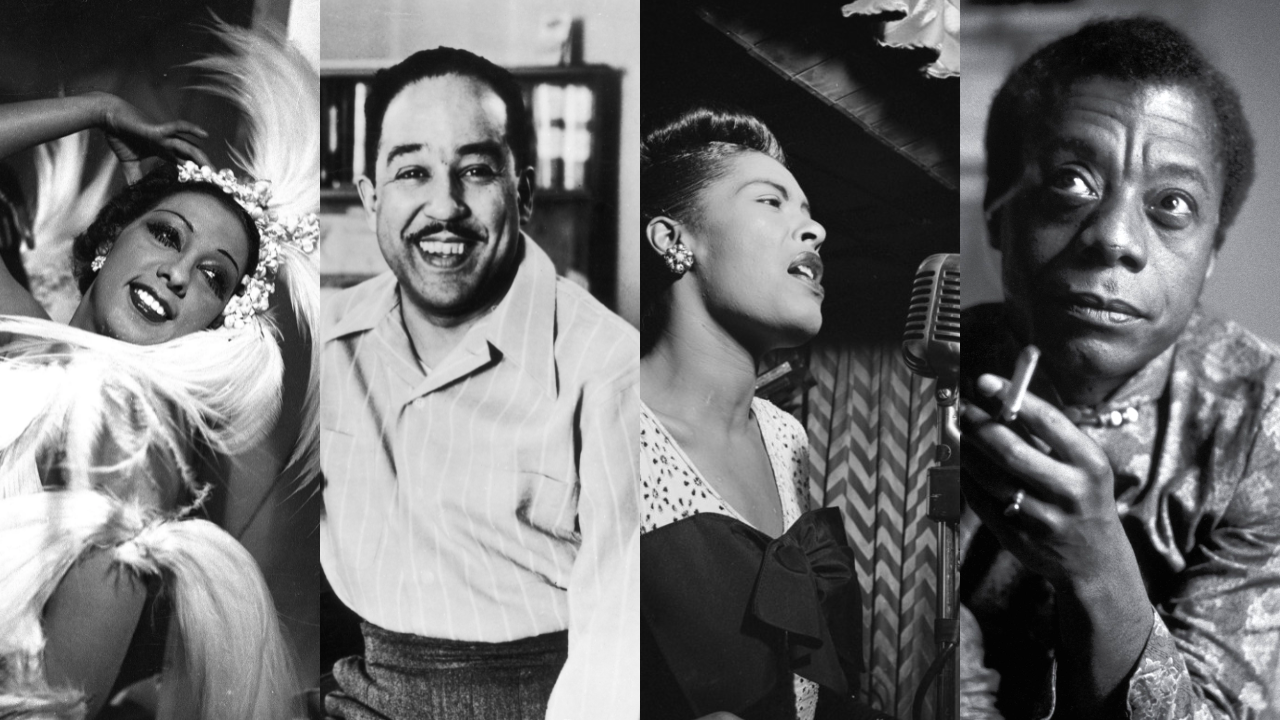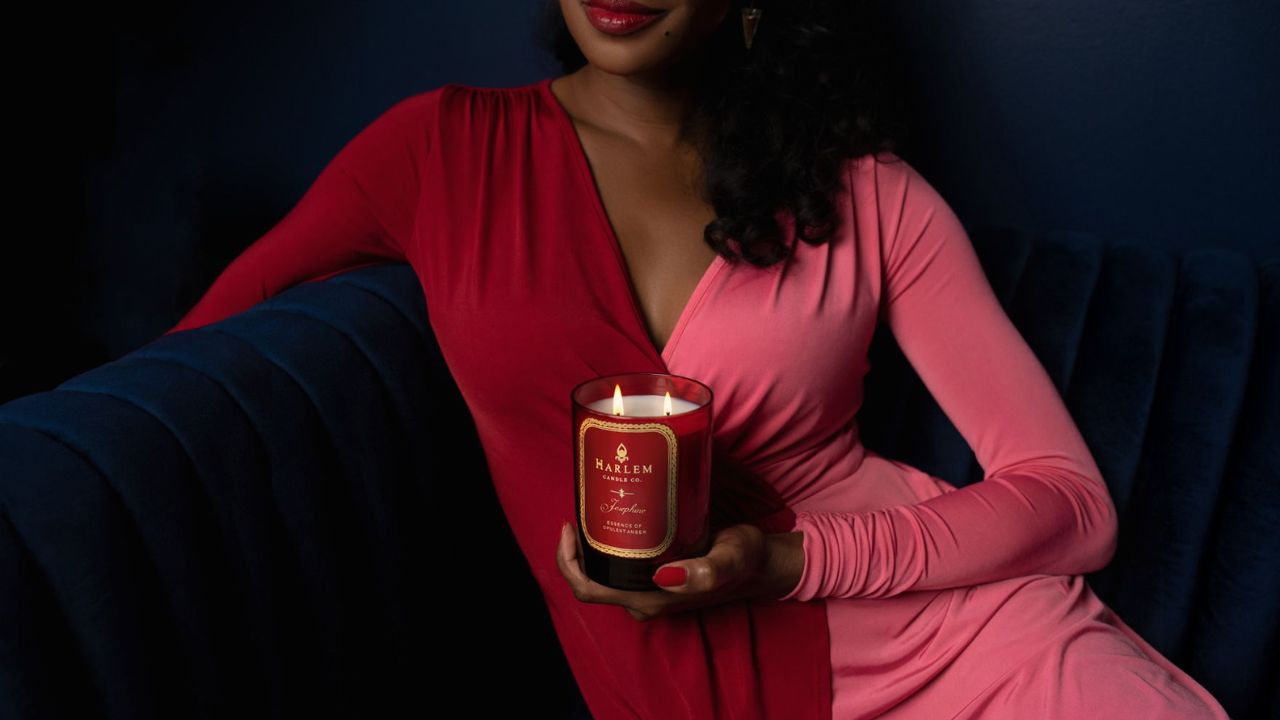Fun Facts About Our Favorite Harlem Icons: Ellington, Fitzgerald, Campbell, and Kitt
To celebrate Black History Month, here are some more fun and interesting facts about our favorite Harlem icons: Duke Ellington, Ella Fitzgerald, E. Simms Campbell, and Eartha Kitt!
And if you missed our previous article about Josephine Baker, Langston Hughes, Billie Holiday, and James Baldwin, check it out here!
Duke Ellington
Duke Ellington started playing the piano when he was 7 and assembled his first band at 18. He came to Harlem in 1923 and became immensely popular for his performances at the Cotton Club. Thus began his 6 decade-long career as a legendary American jazz composer, pianist, and bandleader of the world famous Duke Ellington jazz orchestra. Not only that, he was also a powerful advocate of equality, using his music to celebrate African-American culture and shatter racial stereotypes.
Duke is the inspiration for our "Ellington" luxury candles.
Man of Honor
Duke received many honors in his lifetime, including 13 Grammy Awards, a Pulitzer Prize, the French Legion of Honor, and the President's Gold Medal.
In 1969, he even became the first jazz musician to be awarded the Presidential Medal of Freedom. As President Nixon said when he presented the award to Duke: "In the royalty of American music, no man swings more or stands higher than the Duke."
Ambassador of Jazz
In the 60s and 70s, Duke served as a cultural ambassador for the United States alongside other famous jazz musicians like Louis Armstrong and Dizzy Gillespie. He performed in over 50 countries, using his music and charisma to promote American values and garner public support during the Cold War..
Dapper as a Duke
Duke's dapper style is almost as legendary as the man himself. He was born with the name Edward Kennedy Ellington, but he was so suave and classy—even at a very young age—that his childhood friends gave him the nickname "Duke."
Throughout his adulthood, he was known for the impeccable manner in which he presented himself. He always dressed in sharp, sophisticated suits, complete with top hats and tails. Apparently, he had over 300 custom-made suits in his wardrobe!
Baseball Kid
Back when Duke was still a high school student in Washington D.C., there was a time when he loved baseball more than the piano. He enjoyed playing the sport with his friends at one particular "old tennis court on Sixteenth Street," according to his memoir. There, they would see President Theodore Roosevelt, who would stop by on horseback every now and then to watch Duke and his friends play.
Ella Fitzgerald
Ella Fitzgerald, nicknamed the "First Lady of Song" and "Queen of Jazz," was one of the hottest jazz singers in the United States for more than half a century. She had a unique, velvety voice with an iconic three-octave range. Over her long career, she sold over 40 million albums and won 14 Grammy Awards, as well as honors from two sitting presidents (the National Medal of Arts from Ronald Reagan, and the Presidential Medal of Freedom from George H. W. Bush). Outside of singing, she was also an accomplished advocate of the civil rights movements.
First Lady of Song
Ella won her first Grammy Award in 1958, becoming the first African American woman to do so. That night, she actually won 2 awards: one for Best Female Pop Vocal Performance for Ella Fitzgerald Sings the Irving Berlin Songbook, and another for Best Jazz Performance, Soloist for Ella Fitzgerald Sings the Duke Ellington Songbook.
Fun fact: Ella forgot the lyrics to "Mack the Knife" during a 1960 live album recording and had to improvise on the spot. And guess what, she won a Grammy for that.
Super Bowl Star
Ella was the first jazz artist and the first African American woman to perform at the Super Bowl Halftime Show. This was Super Bowl VI (New Orleans, 1972). She, alongside Carol Channing, performed a tribute to Louis Armstrong, dazzling fans with her rendition of "Mack the Knife."
Introvert
People described Ella as an incredible performer and a shy person. Not just a little bit, but extremely shy. According to pianist Billy Taylor, who worked with Ella when she recorded the Great American Songbook: "She never believed that she was really Ella Fitzgerald."
Fortunately, her introverted nature never held her back from singing her heart out on stage.
E. Simms Campbell
Elmer Simms Campbell was born in St. Louis, Missouri in 1906, and moved to New York City in 1929. He went on to become one of the most famous and successful cartoonists of his time, as well as a distinguished artist of the Harlem Renaissance.
Esquire's Top Artist
Campbell was the first black artist to have his work syndicated around the nation, whose illustrations appeared in Cosmo, Ebony, The New Yorker, Redbook, Playboy, and more. But he is perhaps most well known for his long stint at Esquire, where his work was in almost every issue from 1933 to 1958. During his time there, he helped Esquire establish its visual style and invented their pop-eyed, mustachioed mascot character, Esky.
Nightclub Map of Harlem
In 1932, Campbell was still unemployed and living with his Aunt in a small apartment on Edgecombe Avenue when he created his iconic illustration titled "A Night-Club Map of 1930s Harlem." This cartoon-filled map depicted the famous speakeasies, nightclubs, and musicians of the Harlem Renaissance, including Cab Calloway singing at the Cotton Club and Bill "Bojangles" Robinson doing his step dance at the Lafayette Theater.
music Man
Campbell also had a passion for jazz. He even wrote a chapter in the 1939 book Jazzmen, a seminal study of jazz's history and development.
Eartha Kitt
Eartha Kitt was a talented singer, actress, and Cabaret star of the Harlem Renaissance, best known for her distinctive, sultry voice and dynamic performances. Many consider her a trailblazer in the entertainment industry, breaking down barriers for future generations of black performers. Using her fame as a platform, she was also a fierce advocate for civil rights, LGBTQ rights, and breast cancer awareness.
Santa Baby
Among her many, many accomplishments as a singer, Eartha's musical legacy continues to inspire holiday cheer year after year with her hit song "Santa Baby." It received a mixed reception from music critics when it was first released in 1953, but since then "Santa Baby" has become one of the most iconic Christmas songs of all time. The song has been featured, referenced, parodied, and covered by many artists including Madonna, RuPaul, Kylie Minogue, Taylor Swift, Trisha Yearwood, Ariana Grande, and Gwen Stefani.
Catwoman
In the 1960s, Eartha became the first black woman to achieve mainstream TV success with the role of Catwoman. She took over the role in the third and final season of the original "Batman" TV series and made it her own. Her memorable portrayal was seductive, playful, and helped break racial barriers by flirting on screen with Adam West as Batman.
Multilingual
Eartha Kitt spoke 4 languages (English, French, German, and Dutch) and could sing in 7 more—for a total of 11. Her multilingual talent helped her perform in international venues and connect with audiences from different countries and cultures.




